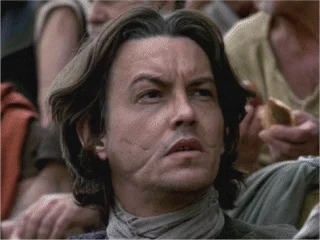The Glasgow Smile meaning is rooted in both dark history and modern culture. This chilling term refers to a brutal act of violence where a person’s face is cut from the corners of their mouth up to their ears, giving the victim a gruesome, permanent “smile.” The Glasgow Smile, also known as the “Chelsea Smile” in some regions, has a notorious background that evokes fear and curiosity. In this article, we’ll explore the Glasgow Smile’s meaning, its origins, the cultures tied to it, and its impact on modern media and society.
What Is the Glasgow Smile?
The Glasgow Smile meaning refers to a violent facial disfigurement. This injury typically happens when someone’s cheeks are slashed from the corners of the mouth, extending toward the ears. The cuts often cause the face to form a grotesque “smile” shape, giving the wound its name. It’s important to note that this act was initially associated with gang violence, particularly in Scotland, but has since found its way into modern culture, literature, and films.
History Behind the Glasgow Smile
The Glasgow Smile meaning originates from the violent gang culture of Scotland, particularly in Glasgow, during the 1920s and 1930s. The city’s crime-filled streets often saw clashes between gangs, and the Glasgow Smile was a brutal way to send a message. The technique was used to humiliate and permanently scar victims, often those who betrayed gangs or rival factions. While it’s terrifying to imagine, the practice became widespread in certain circles, and it’s believed to have left hundreds of people with this permanent disfigurement.
How Did the Glasgow Smile Spread?
Although Glasgow Smile meaning started in Scotland, it didn’t stay there. As gang violence spread, so did the use of this cruel punishment. In London, particularly in Chelsea, the act became known as the “Chelsea Smile,” as gangs in England also adopted the gruesome tactic. Over time, it became part of the larger gangland folklore and an act of retribution among organized crime groups. What made it particularly terrifying was that the victim often didn’t die but lived with a scar that served as a lasting reminder of their encounter with violent groups.
The Glasgow Smile in Popular Culture
The Glasgow Smile meaning has found its way into pop culture, often symbolizing brutality, rebellion, or villainy. One of the most famous modern portrayals of a Glasgow Smile is the character of the Joker in various Batman adaptations. Heath Ledger’s Joker in “The Dark Knight” sports a Glasgow Smile, adding to the menacing and unpredictable nature of the character. Additionally, the use of the Glasgow Smile in films, music, and even video games has further cemented its place as a symbol of fear and chaos.
Why Is It So Popular in Media?
The Glasgow Smile meaning represents more than just physical violence—it symbolizes mental and emotional torment. This grim image of a forced smile, eternally etched on a face, captures the twisted nature of many villainous characters in film and literature. It adds layers of depth to these characters, showing the duality between a smile, a symbol of happiness, and the horror that lies beneath it. The stark contrast has made the Glasgow Smile a go-to visual for writers, directors, and character designers who want to convey darkness in their characters.
Modern-Day Relevance of the Glasgow Smile
While the Glasgow Smile meaning is tied to historical violence, it hasn’t disappeared from today’s world. Though less common, modern gangs in certain parts of the world have continued the practice as a form of intimidation or revenge. Thankfully, the rise of law enforcement efforts and better social structures have reduced the prevalence of such acts. However, the Glasgow Smile still lingers in the public consciousness, often invoked in storytelling to represent the ultimate punishment.
Cultural Impact of the Glasgow Smile
Today, the Glasgow Smile meaning goes beyond gang culture—it has become a metaphor for hidden pain and forced happiness. In various art forms, the Glasgow Smile is used to illustrate the concept of people putting on a happy face while suffering internally. This duality of emotions is something many people can relate to, making the Glasgow Smile a powerful symbol in visual storytelling. The lasting impact of this symbol shows just how deeply ingrained the Glasgow Smile has become in both literal and metaphorical ways.
The Psychological Toll of the Glasgow Smile
The Glasgow Smile meaning isn’t just about physical disfigurement—it also represents a deep psychological wound. Victims of the Glasgow Smile often experienced not only physical pain but also a lifetime of emotional trauma. The lasting scars were a constant reminder of the event, making it impossible to move on from the violence. Today, we recognize the importance of addressing not only physical scars but also the mental health struggles that accompany such traumatic experiences.
Is There Any Medical Treatment for the Glasgow Smile?
Modern medicine has developed procedures to treat facial disfigurements like the Glasgow Smile meaning, but the emotional scars remain harder to heal. Surgeons can attempt to repair the skin with reconstructive surgery, but the psychological healing process is much more complex. Victims often require extensive therapy to overcome the trauma associated with such a violent act, as it is not just the appearance that changes, but the person’s entire self-image.
Read more: The Life and Legacy of Terry Flenory: A Comprehensive Insight
Frequently Asked Questions About the Glasgow Smile Meaning
The Glasgow Smile meaning refers to a violent act where a person’s cheeks are slashed from the corners of their mouth towards the ears, creating a permanent, disfiguring “smile.”
The Glasgow Smile meaning originated in the gang violence of Glasgow, Scotland, during the early 20th century. It was later adopted by gangs in other parts of the UK and beyond.
It is called a Glasgow Smile because it was primarily used by Glasgow-based gangs as a form of punishment and humiliation during violent gang conflicts.
While physical scars from a Glasgow Smile can sometimes be treated with reconstructive surgery, the emotional trauma often requires long-term therapy and mental health support.
Though less common, the Glasgow Smile still occasionally appears in modern gang violence, though it is far rarer than it was during its origin in the early 20th century.
Conclusion
The Glasgow Smile meaning is one that carries both a terrifying history and a powerful place in modern storytelling. While the act originated in the gang violence of early 20th-century Glasgow, it has since become a symbol of hidden pain, forced happiness, and trauma. Whether depicted in movies, literature, or simply as a metaphor, the Glasgow Smile’s dark history continues to captivate and terrify. While we may see fewer cases of this brutal act today, its legacy remains, reminding us of the darker aspects of human nature and the scars—both physical and emotional—that violence can leave behind.





